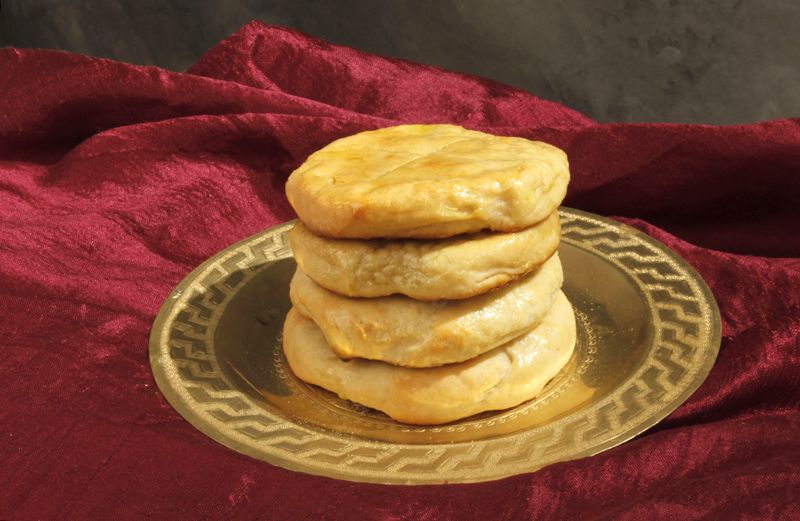The menu for first-century weddings feasts certainly included wedding cakes, but these cakes were nothing like their modern counterparts.
First-century cooks and bakers made their sweets and pastries without ingredients such as refined sugar and chocolate and without leavening agents like baking soda and baking powder.
First-century cakes were much more like flat cheese cakes or modern fruitcakes, using dried fruits like dates and apricots and honey or fruit syrup as the sweetener, or like raisin bread, small pieces of dried fruit added to standard bread recipes.
Throughout the Mediterranean, there were a number of different traditions involving the wedding cake. Ancient Romans used cakes made of wheat or barley, and a cake was broken over the wife's head as a symbol of her fertility.
Also, the wedding party would stack the cakes, one on top of the other, as high as they could be stacked. The bride and bridegroom then had to kiss each other over the tower of cakes without knocking them over. If they were successful, the couple looked forward to a lifetime of prosperity.
Among Greeks and Romans, the bride and bridegroom took several wedding cakes to the local temple or shrine and sacrificed them to the appropriate god or goddess.
This practice was eventually imitated by first-century Jewish couples, who began offering a wedding cake as a sacrifice to God during the wedding feast.
This practice is hard to imagine, since the sacrifice must have taken place away from the temple. Perhaps it consisted of a special prayer of thanksgiving or a prayer for fertility as the wedding cake was first offered to God and then was broken and eaten by the bride and bridegroom.
* * *
This recipe is our version of a wedding cake described by Cato. Living in the century before Jesus, he wrote about farming and wine making. His writings also included examples of how foods were prepared, including this sweet cake.
Wedding Cake
Ingredients
| 1 ½–2 c. unbleached all-purpose flour, enough to bring dough together in a soft ball that is not sticky |
1 Tbsp. olive oil |
| 1 c. ricotta cheese | ½ c. and 1 Tbsp. honey, divided use |
| 1 egg, beaten | Fresh bay leaves |
Preparation
1. Preheat the oven to 400°. Sift the flour. Place the cheese in the mixer and beat on low for 20 seconds
2. Add the flour, egg, olive oil, and 1 tablespoon honey, and then mix until combined but still soft.
3. Grease a baking sheet. Divide the dough into 4 pieces and then shape into cakes, approximately 3/4 inch thick. Place a bay leaf on the baking sheet and the cake on top of it.
4. Tightly cover the baking sheet with aluminum foil that has been greased to avoid sticking to the cakes and then bake for 30 to 35 minutes until beginning to brown, removing the foil for the final 5 minutes.
5. Remove from the oven and form a cross on each cake with a knife before pouring the honey over it; this allows the honey to seep into the cake. Allow to sit for 10 to 15 minutes. Remove the bay leaves and serve.
Serves 4.
Nutritional Information: Calories: 650; Fat: 12g; Cholesterol: 75mg; Sodium: 70mg; Total Carbohydrates: 119g; Dietary Fiber: 2g; Sugars: 73g; Protein: 17g.




